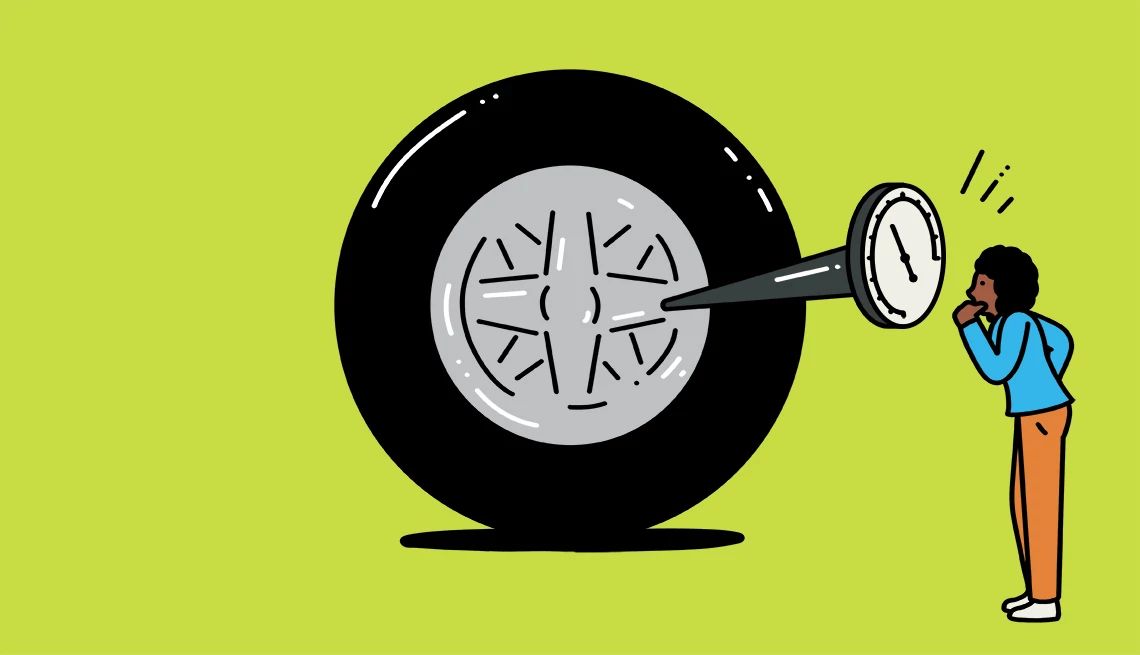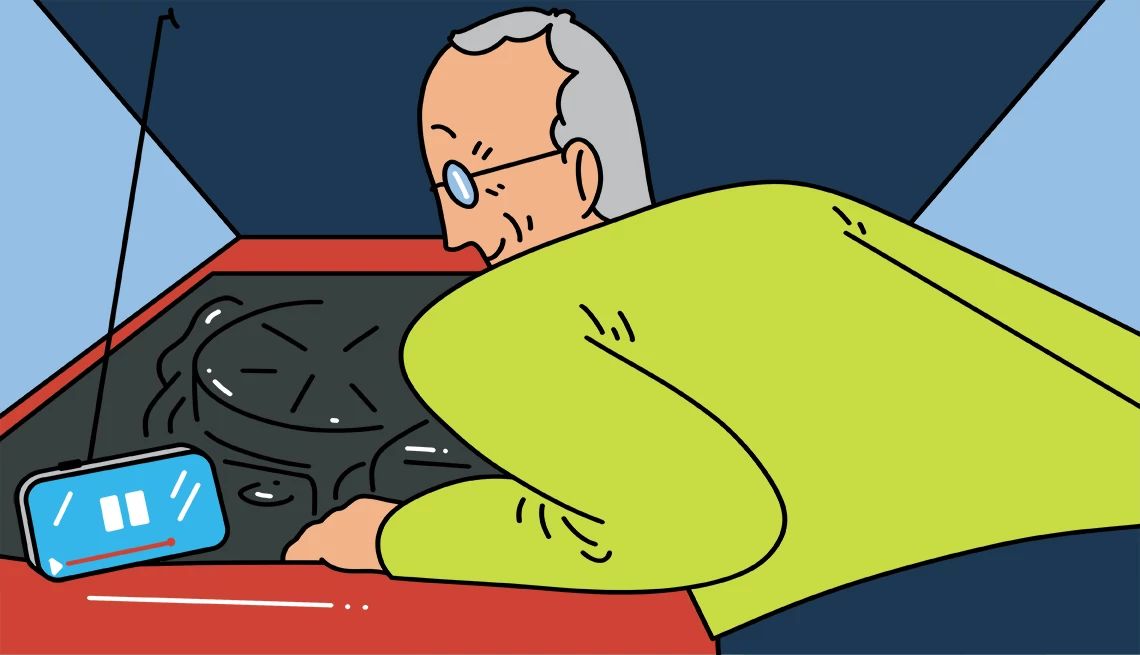AARP Hearing Center


Getting around is a necessary but increasingly costly endeavor. American households spent $13,174 on transportation in 2023 — about 7 percent more than we did the previous year, according to the Bureau of Labor Statistics’ most recent data.
Almost every element of our driving experience has gotten more expensive. Insurance rates rose by more than 50 percent over the past three years. Auto financing costs dipped recently, but interest rates are still three percentage points higher than they were at the end of 2021. And we’re spending more than $48,000, on average, for a new car — around $10,000 more than we did in 2020. The only relief has been that gas prices have fallen from their 2022 record high, clocking in at approximately $3.15 per gallon on average in late March, AAA reports.
Vehicle costs won’t be pulling a U-turn and reducing anytime soon, especially if automakers raise prices in response to President Trump’s tariffs. But you can lower your own car spending, potentially by thousands of dollars, by utilizing these 25 tips and strategies recommended by auto experts.
Car buying
1. Pick the right car for your needs and budget
“The biggest financial mistake people can make is buying the wrong vehicle for them and then selling it soon after to purchase another,” says Matt Jones, senior director of brand and industry at car-buying website TrueCar. “No amount of deal hunting, discounts and sly negotiations can save you more money than you will cost yourself by picking the wrong car and trading it in prematurely.” This is because cars depreciate over time, seeing the biggest drop in value, about 20 percent, within the first year. Moreover, if you took out a loan to finance the car purchase, you’ll likely owe more than the vehicle is worth when you sell it.
Carefully consider which vehicles and features make the most sense for your lifestyle both now and in the future. “Be realistic about your needs,” says Sean Tucker, lead editor for Kelley Blue Book. “People might think they need three rows of seating for when the grandkids visit, but if that only happens at Christmas, save yourself $10,000 by buying a car with two rows and renting a bigger car when you need it.” Read reviews and take test drives to get a sense of a vehicle’s maneuverability, comfort, noise level and handling. Kelley Blue Book, Edmunds and AAA allow you to look up five-year cost-of-ownership estimates that account for the purchase price as well as fuel, maintenance, insurance, financing, state fees and depreciation.
2. Research the car’s average sales price before stepping onto a dealership lot
Once you’ve identified the particular vehicle you want, find out how much the car costs on average before visiting a new or used car dealership, since sticker prices can vary between dealers. “Always go into a negotiation with information,” says Ronald Montoya, senior consumer advice editor for Edmunds. “You need to know what the going rate for the car you want in your local area is so you’re in the best position to determine what’s a good price and you’re not asking for anything unreasonable.”
Many sites, such as Edmunds, Kelley Blue Book, TrueCar, Carfax and Consumer Reports, show how much the make and model you want is currently selling for in your area based on recent sales data, usually described as the average offer, market price or fair market price. Knowing this figure can help you negotiate since it gives you a more accurate benchmark than the vehicle’s MSRP, or manufacturer's suggested retail price. If a salesperson’s offers aren’t within the range of competitive prices you’ve researched, walk away and visit another dealership.
3. Look beyond local dealers
Casting a wider geographic net could help you nab a better deal than sticking close to home. “Don’t limit yourself to shopping in your area,” Tucker says. “If you can save $1,000 by driving two hours, isn’t that worth it?” He cautions that you may want to stay within your state boundary to avoid tax issues or buying a vehicle that doesn’t meet your state’s emissions standards.
4. Time your shop
Better deals on new cars often appear in the fall or early winter, from October through December, when dealers mark down vehicles in an effort to clear out the previous year’s models and meet their year-end sales goals, Montoya says. And, as more people buy new cars, they sell or trade in their old ones, making the end of the year a good time for used-car shoppers, too. “The used-car market typically sees an influx of cars starting in early fall, helping to drive prices down,” he adds. If you don’t want to wait until then to buy, visit a dealership on the last few days of the month — salespeople or dealerships that are behind on their monthly quotas may be more willing to discount at that time.


5. Don’t be swayed by extras
“Buying a car can become an emotional decision,” Jones says. “We’re in a reward mindset, we’re treating ourselves to this big purchase, and we can overbuy or decide we want the top of the line, but do we need that?” Because it’s often more profitable for carmakers to build higher-end, luxury models, you may struggle to find base-model options at dealerships, tempting you to buy up. Try to stick to the trim level you’ve budgeted for by shopping around or asking if the dealer can place a custom order with the manufacturer.
Dealerships also commonly “sell accessories that don’t come with the car, like wheel locks or tinted windows, that end up making it more expensive,” Montoya says. While some dealerships view installed extras as nonnegotiable, many are willing to reduce the price — if you negotiate. “I’ve seen dealerships discount the options by half or, in some cases, if the customer is really insistent, the options are thrown in for free,” says Montoya. Some pricey extras to avoid or at least avoid paying more for: VIN etching, protective coatings like rustproofing, extended warranty coverage, nitrogen-filled tires, and embellishments like pinstriping or door edge guards.
Auto loans
6. Compare quotes from multiple lenders
Getting auto loan offers from several lenders could save you thousands. According to LendingTree, car buyers who shopped for loans on its auto loan comparison platform could have saved an average of $5,198 over the life of their loan by opting for the offer with the lowest interest rate versus the highest rate. Drivers with a credit score of 720 or better can save even more by comparison shopping, as lenders may offer them a wider range of interest rates. Contact your current bank or credit union, as well as other financial institutions and online lenders, to see what interest rates and repayment terms they’ll provide on an auto loan. You can also try an online lending marketplace such as LendingTree, myAutoloan or Autopay to solicit and compare quotes from several lenders in one step.
7. Think about more than just the loan’s monthly cost
Dealers may try to focus negotiations on what your monthly car payment would be, rather than the vehicle’s sales price. This tactic could get you to spend more on the car, added extras or financing without you realizing it. For example, drawing out the duration of a loan would reduce the amount of the monthly payment, but it increases the total interest you’d pay. Say you take out a $39,000 five-year auto loan with a 6.8 percent interest rate, bringing your monthly bill to $769. Extending the loan another two years would lower your monthly outlay to $585, but you’d pay about $3,000 more in interest overall.




































































You Might Also Like
25 Great Ways to Make a Good Apology
25 Great Ways to Make a Good Apology
I'm Helping Pay My Grandson’s College Costs. He Wants to Waste the Money Studying Philosophy
Don’t approve of your grandchild’s major? Tread carefully
Tips to Find the Best Car for You
From making sure the screen text is large enough to having power seats, here’s what older drivers should look for